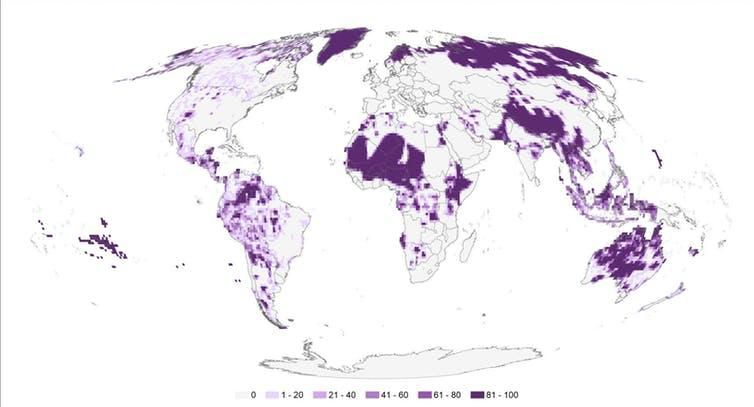First published on 07/23/2018, and last updated on 08/22/2018
Three years ago, an international team of researchers set out to find out just how much land the world’s indigenous peoples controlled.
After pulling together data from 127 sources, including state records, census data, public maps and other studies, they published the first reliable data on the topic in the journal Nature Sustainability. The new paper estimates that indigenous peoples, who make up approximately 5 percent of the world’s population, use or have management rights to more than a quarter of the earth’s surface—roughly 14.7 million square miles of land in 87 political regions. What’s more, the authors suggest that empowering these people to make more decisions about land use could be a big step in conserving, restoring and protecting ecologically valuable habitat around the globe.
“Understanding the extent of lands over which Indigenous Peoples retain traditional connection is critical for several conservation and climate agreements,” lead author Stephen Garnett from Charles Darwin University in Australia says in a press release. “Not until we pulled together the best available published information on Indigenous lands did we really appreciate the extraordinary scale of Indigenous Peoples’ ongoing influence.”
That influence is usually for the best when it comes to conservation. Co-author James Watson of the Wildlife Conservation Society says that indigenous-controlled lands are usually more ecologically sound than other areas. “We found that about two thirds of Indigenous lands are essentially natural,” he says in the release. “That is more than double the proportion for other lands.”
For the full article, click HERE.
Source: Smithsonian Magazine
